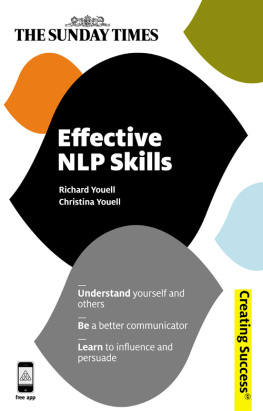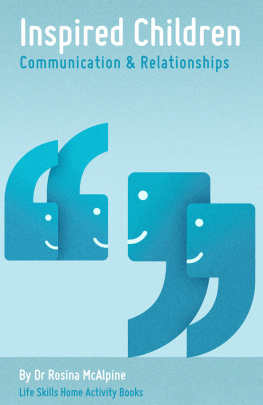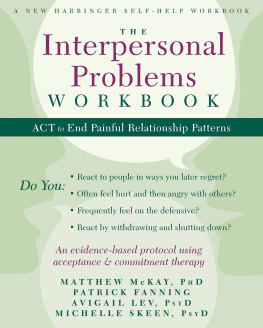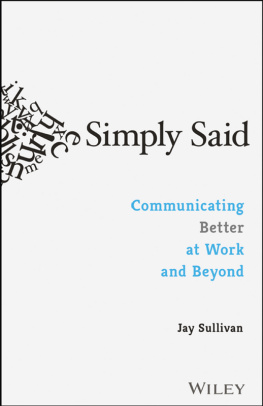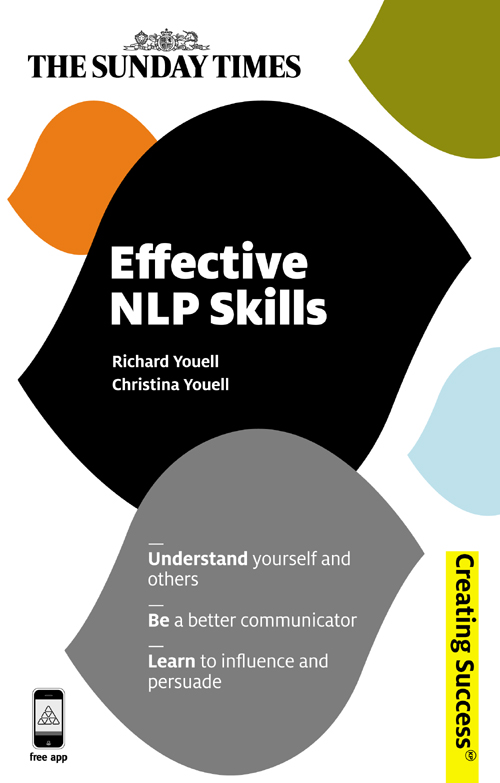This is a very practical introduction to NLP which avoids too much jargon or faddism. It explains the main tenets of the field and, most importantly, it shows how the NLP may be applied to the most important areas of life, both at work and at home. The subject is clearly explained and should benefit anyone working on either their own development or, the development of others. As a Business Coach, I look forward to the final release of the book.
A clear and concise exposition of the practical uses of NLP, both for those self-learning as well for practitioners assisting others in their personal growth. A relevant publication for all professional sectors from the expanding not-for-profit movement to the nations captains of industry. Dip in and out of it or read it cover to cover something for everyone.
If you believe as I do that there is more to achieving goals and dreams than ticking boxes; read this book. You will discover an entertaining, easy to follow guide to NLP that will allow you to get the best from yourself, those that you work for and with, and achieve the results you want. My expectations were set at a high level as I began to read this book and I was not disappointed.
This is a pragmatic, user-friendly guide that helps you understand NLP; it can be used to improve both your personal and professional lives. Indeed it is a must for everyone's personal development, all aspiring inspirational leaders and anyone for whom building relationships and effective communication are important.
Note on the Ebook Edition
For an optimal reading experience, please view large
tables and figures in landscape mode.
This ebook published in 2011 by
Kogan Page Limited
120 Pentonville Road
London N1 9JN
UK
www.koganpage.com
Richard Youell and Christina Youell
E-ISBN 9780749462765
Contents
What is NLP?
Neuro-Linguistic Programming (NLP) is the study of the structure of subjective experience. It is concerned with the basic building blocks and functions of our mindbody system that enable us to think, feel, experience and imagine the world around us. NLP describes how we experience the world and people around us (which is what we experience). Knowing something about the structure of the how can be very helpful if we want to make changes to the what.
Neuro : this relates to the brain and the things that go on in your mind. It also covers the rest of your neurological system, including your five senses: sight, hearing, feeling, taste and smell.
Linguistic : this concerns the language, both spoken and non-spoken (body language) communication systems that you use to code, order and understand the representations that you get from your senses (sights, sounds, feelings, etc) as well as your thoughts and how you make meaning or sense of what you experience.
Programming : this concerns your behaviour and thinking patterns, how you organise your thoughts, feelings and communications to achieve your specific desired goals and results. Much of what we do is learnt behaviour, which we perform automatically and unconsciously. In NLP, our thought patterns and behaviours are like computer software programs or scripts that we run in ways that are most useful to us.
When and where NLP might be useful to you
NLP is a collection of frameworks, models, methodologies and techniques that can help you to better understand yourself and other people. The purpose of the NLP tools and techniques is to have more effective communication, better motivation for yourself and others, and a more positive frame of mind. NLP gives you some helpful tools and techniques for changing what you experience and do. It gives you more choices in how you think, feel and behave, so that you have more options to choose from to get what you want.
There are many contexts in life in which NLP can be helpful. The context that we are most concerned with in this book is the workplace: how you can get the best from yourself and those that you work with, to get the results that you want.
How to read this book
One of the principles of NLP is the recognition of the benefits of being curious. We ask you, the reader, a number of questions throughout this book. These questions are born out of our own wanton curiosity and are a great way to get you engaged in your own learning. To get the most benefit from the time you spend reading this book, you will want to consider your responses and reactions to all these questions and reflect on your answers.
The structure of this book
This book is divided into the following sections. You can dip in and read the book in any order that you like.
History
A brief summary of the development of NLP, the people involved and their influences and backgrounds.
Your brain a user manual
This section describes some of the underlying building blocks, frameworks and principles that underpin the NLP tools and techniques described in the other sections. It describes some fundamental ways in which your neurology works so that you have a better understanding of how you do what you do, so that you can more easily change how you do things, when you want to.
Managing yourself
This section describes some tools and techniques that are useful for managing yourself:
how you can better motivate yourself by constructing really compelling goals that you will want to achieve;
how you can choose the most useful attitude or perspective to have in a particular situation;
how you can develop your own adaptability so that you are better able to act in ways that are most effective for you when situations change.
Managing others
This section describes some tools and techniques that are useful if you manage or need to influence other people at work: how you can build rapport with others so that you can better understand, communicate, influence and motivate them.
Powerful use of language
This section covers some of the specific tools and techniques that NLP has developed for improving our communications. Body language as well as verbal techniques are addressed here.
Business applications
This section covers some specific workplace situations where NLP techniques can be really useful, such as giving and receiving feedback, conducting appraisals and dealing with poor performance, finding the most appropriate leadership style for a particular situation, and selling and influencing. It also covers ways in which NLP can be helpful for considering time management and your own levels of stress.
NLP was developed in the early 1970s at the University of California at Santa Cruz by John Grinder, an associate professor of linguistics, and Richard Bandler, a psychology student with a background in mathematics and computer science. Bandler and Grinder were both interested in how certain people were able to communicate and influence others very effectively. Bringing together Grinders expertise in language patterns and Bandlers skill in noticing and codifying those patterns, they studied some highly effective therapists who were all able to help people make positive changes to their lives just by listening to them and talking with them. The therapists that they studied were Fritz Perls, the developer of gestalt therapy, Virginia Satir, a noted specialist in family therapy and change management, and Milton Erickson, an eminent clinical hypnotherapist. These studies, which identified the key behaviours, approaches and language patterns of these therapists, developed into a methodology all of its own, which became NLP. At the heart of this work was the concept of modelling, ie finding a role model, or exemplar, who has an ability to do something very well, observing and questioning them and finding the set of strategies, emotions and behaviours that they use to perform that ability. Once you have identified the components of the ability then others can adopt them and perform that ability.

